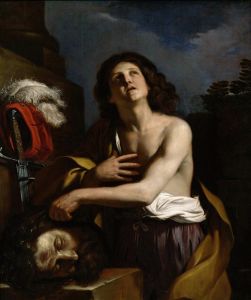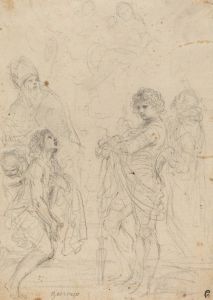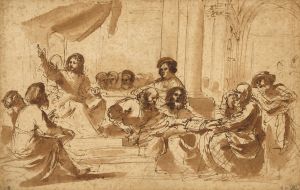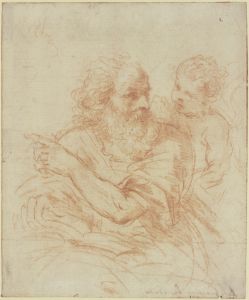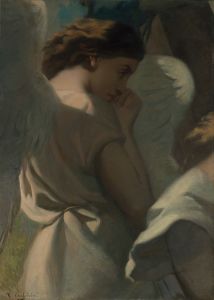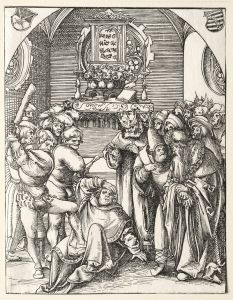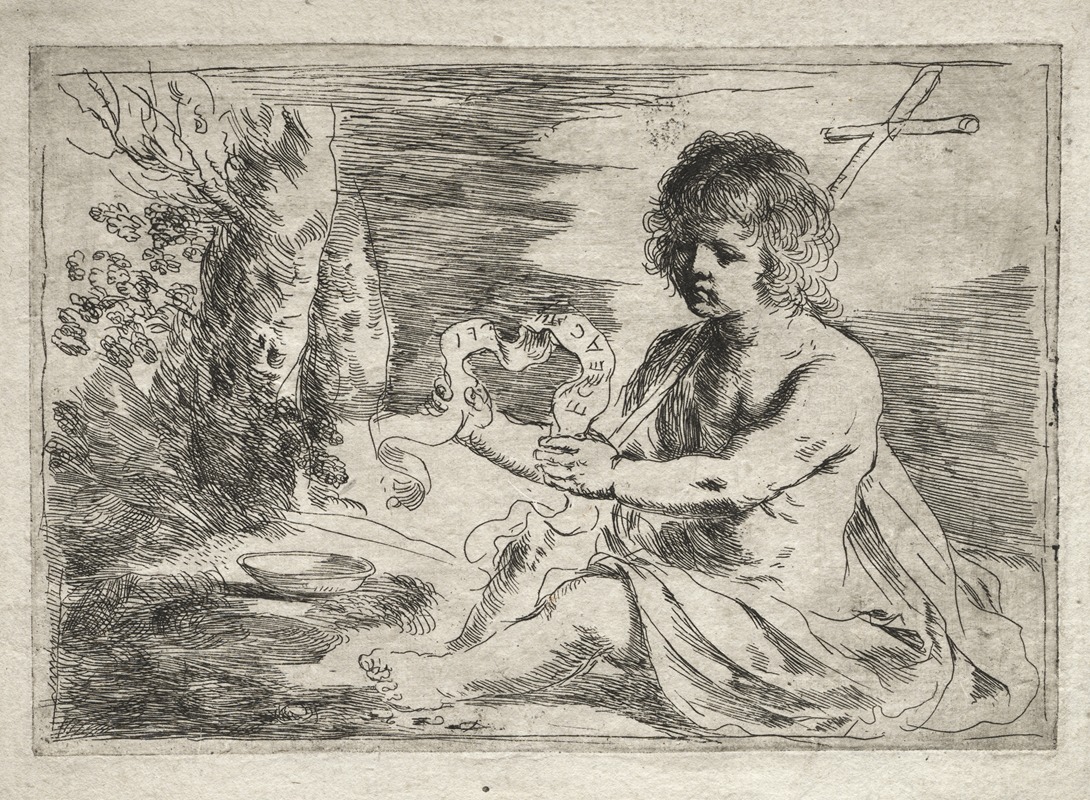
St. John the Baptist
A hand-painted replica of Guercino’s masterpiece St. John the Baptist, meticulously crafted by professional artists to capture the true essence of the original. Each piece is created with museum-quality canvas and rare mineral pigments, carefully painted by experienced artists with delicate brushstrokes and rich, layered colors to perfectly recreate the texture of the original artwork. Unlike machine-printed reproductions, this hand-painted version brings the painting to life, infused with the artist’s emotions and skill in every stroke. Whether for personal collection or home decoration, it instantly elevates the artistic atmosphere of any space.
St. John the Baptist is a painting by the Italian Baroque artist Giovanni Francesco Barbieri, better known as Guercino. This artwork, created in 1621, is a significant example of Guercino's mastery in the Baroque style, characterized by dramatic use of light and shadow, as well as emotional intensity.
The painting depicts St. John the Baptist, a prominent figure in Christianity known for baptizing Jesus Christ and preaching about repentance and the coming of the Messiah. In this work, St. John is portrayed as a young man, which aligns with the traditional iconography of the saint. He is typically shown with attributes such as a reed cross, a lamb, and a camel-skin garment, all of which symbolize his role as the forerunner of Christ and his ascetic lifestyle in the wilderness.
Guercino's St. John the Baptist is notable for its dynamic composition and the use of chiaroscuro, a technique that employs stark contrasts between light and dark to create a sense of volume and three-dimensionality. The saint is illuminated by a strong light source, which highlights his muscular physique and serene expression, while the background remains in shadow, enhancing the dramatic effect.
The painting reflects Guercino's ability to convey both physical presence and spiritual depth. St. John's contemplative gaze and the serene yet intense atmosphere of the painting invite viewers to reflect on the saint's spiritual journey and his role in the Christian narrative. The use of rich, warm colors and the meticulous attention to detail in the rendering of textures, such as the roughness of the camel-skin garment and the softness of the lamb's wool, further demonstrate Guercino's technical skill and artistic sensitivity.
St. John the Baptist by Guercino is housed in the Galleria Borghese in Rome, Italy. The Galleria Borghese is renowned for its extensive collection of Baroque art, and this painting is one of its highlights. The gallery's collection was originally assembled by Cardinal Scipione Borghese, an avid art collector and patron of the arts, who played a crucial role in promoting the careers of many artists, including Guercino.
Guercino, born in Cento, Italy, in 1591, was a prolific painter whose works are celebrated for their emotional intensity and dynamic compositions. He was influenced by the naturalism of the Bolognese School and the dramatic lighting effects pioneered by Caravaggio. Throughout his career, Guercino received numerous commissions from religious and secular patrons, and his works can be found in major museums and collections around the world.
In summary, St. John the Baptist by Guercino is a masterful representation of the saint, showcasing the artist's skill in capturing both physical and spiritual elements through the use of dramatic lighting, rich colors, and detailed textures. The painting remains an important piece within the Galleria Borghese's collection, reflecting the enduring legacy of Guercino's contribution to Baroque art.





